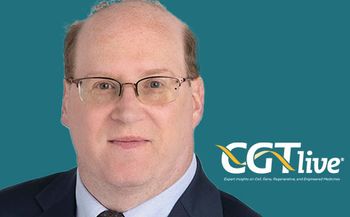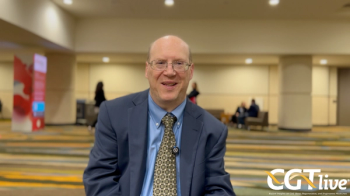
Consolidative alloHSCT Effective After CAR T Cells in B-ALL
Follow-up of 4.8 years to a phase 1 trial demonstrated that deep and durable responses are attainable in a large cohort of children and young adult patients with B-cell acute lymphoblastic leukemia who were treated with CD19-directed CAR T-cell therapy followed by allogeneic hematopoietic stem cell transplantation.
In a long-term follow-up of an early-phase trial examining CD19.28ζ chimeric antigen receptor (CAR) T-cell therapy, the use of consolidative allogeneic hematopoietic stem cell transplant (alloHSCT) was associated with long-term and durable disease control in children and young adults with B-cell acute lymphoblastic leukemia (B-ALL).
These results were based on a cohort of 20 patients who were initially treated in a dose-escalation part of a phase 1 trial (NCT01593696) examining anti-CD19 CAR T-cell therapy in patients between 1 and 30 years who have not responded to standard treatment, plus an additional 30 patients who were treated in an expansion portion. The median follow-up for all patients examined was 4.8 years and represents the longest time period examined for the use of this therapy in children and young adults with B-ALL.
“We demonstrate that CD19.28ζ CAR T cells followed by a consolidative alloHSCT can provide long-term durable disease control in [child and young adult patients] with relapsed or refractory B-ALL,” wrote the study investigators who were led by Nirali N. Shah, MD. “Following alloHSCT, we observed a significant long-term [event-free survival (EFS)] with an apparent plateau and a low relapse rate, providing support for this sequential approach for long-term cure.”
The complete response rate (CR) was 62.0%, with 28 of the 31 patients achieving this end point also reaching minimal residual disease (MRD) negativity by flow cytometry. The rate of CR was higher in patients with primary refractory disease (P = .0035), fewer prior lines of therapy (P = .033), and an M1 marrow (P = .0007). Additionally, CR rates were better for patients who received fludarabine/cyclophosphamide–based lymphodepletion versus other regimens, at 69% and 25%, respectively (P = .041).
The median overall survival (OS) for the cohort was 10.5 months (95% CI, 6.3-29.2 months). The median EFS was 3.1 months (95% CI, 0.9-7.7), with rates at 3 and 6 months of 52.0% (95% CI, 37.4%-64.7%) and 38.0% (95% CI, 24.8%-51.1%), respectively. Notably, median EFS was not reached in patients treated with M1 marrow versus 0.9 months in those with ≥M2 marrow (P ≤.0001).
Of the patients achieving MRD-negative CR (n = 28), 21 (75.0%) went on to receive consolidative alloHSCT, with a median time to transplant of 54 days from infusion (range, 42-97). The median OS from transplant day 0 was 70.2 months (95% CI, 10.4 months-not estimable) and the median EFS was not reached. The rate of EFS at 5 years was 61.9% (95% CI, 38.1%-78.8%). There were 8 deaths between 0.8 and 71 months following alloHSCT, which included transplant-related complications and/or graft-versus-host disease or infection in 6 patients and 1 patient with a complication of secondary malignancy at 3 years post-transplant. Teo patients relapsed after alloHSCT, with a cumulative risk of relapse was 4.8% (95% CI, 0.3-20.3) and 9.5% (95% CI, 1.5%-26.8%) at 12 and 24 months, respectively, with death as a competing risk.
Of note, achieving a CR was associated with greater CAR T-cell expansion and grade 3/4 cytokine release syndrome (CRS). Overall, CRS occurred in 70.0% of patients, with 9 (18.0%) having a grade 3/4 event. Neurotoxicity occurred in 10 patients (20.0%), with 4 having severe neurotoxicity.
Central nervous system involvement was effectively treated with CAR T-cell therapy all patients with a marrow response and CRS, although 1 patients did have residual disease by flow cytometry at low levels.
The authors noted that given these findings, CD19-directed CAR T-cell therapy may be considered as a bridge to alloHSCT versus standard-of-care blinatumomab (Blincyto).
“Despite its more ready availability, which is not dependent on manufacturing time or success thereof, the efficacy of blinatumomab in children is lower than in adults receiving blinatumomab and also lower than remission rates following CD19-CAR T cells, using any construct, particularly for those with high-burden disease,” the study author wrote. “Therefore, selection of CAR T cells over blinatumomab may be advantageous in patients with higher-burden disease and [extramedullary] disease or as a salvage for blinatumomab nonresponders.”
References
Shah NN, Lee DW, Yates B, et al. Long-Term Follow-Up of CD19-CAR T-Cell Therapy in Children and Young Adults With B-ALL. J Clin Oncol. March 25, 2021. doi: 10.1200/JCO.20.02262
Newsletter
Stay at the forefront of cutting-edge science with CGT—your direct line to expert insights, breakthrough data, and real-time coverage of the latest advancements in cell and gene therapy.

















































